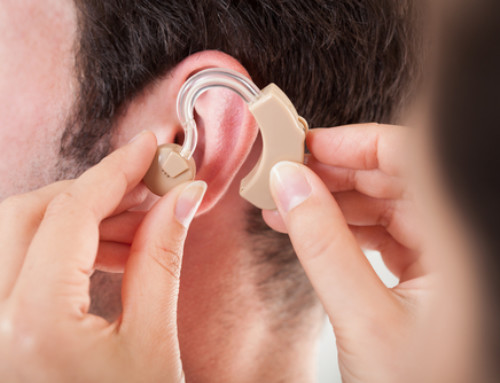 Are you asking others to repeat themselves more often than usual? Are you turning up the TV volume higher than normal? If you’re noticing these changes in your lifestyle, you may have a form of hearing loss.
Are you asking others to repeat themselves more often than usual? Are you turning up the TV volume higher than normal? If you’re noticing these changes in your lifestyle, you may have a form of hearing loss.
Losing one of your senses can be an unsettling feeling, but modern hearing aids can help to remedy any degree of hearing loss. Hearing aids are available in a wide range of styles to meet your comfort and hearing needs, and their overall effectiveness will depend on your degree of hearing loss. Let’s first discuss the different types of hearing loss you may be experiencing.
Types of Hearing Loss
Hearing loss can affect anyone at any age, and the cause can be due to different factors or lifestyle choices. Here are the three types of hearing loss:
Sensorineural
The most common type of hearing loss is sensorineural, and it occurs when the tiny hairs and nerves in your inner ear become damaged. Loud noises, age, medication, illness, genetics, or trauma are potential causes of sensorineural hearing loss.
Conductive
Conductive hearing loss is less common, and it occurs when a type of physical barrier blocks sound from passing into the inner ear. Obstructions like wax, fluid, foreign objects, trauma, or even a ruptured eardrum could cause this type of hearing loss.
Mixed & Other
Sometimes hearing loss can be a combination of sensorineural and conductive hearing loss: this is called mixed hearing loss. Other rare conditions can cause hearing loss as well, like tinnitus (a ringing in the ears).
Whichever type of hearing loss you are experiencing, there is a hearing aid for you. Here is a quick rundown of widely available hearing aid models.
Types of Hearing Aids
Behind-the-Ear (BTE)
Only a part of this hearing aid sits behind your ear to keep it in place. The remainder of the hearing aid sits inside your ear, where the custom-molded design directs sound into your ear canal with specially designed tubes. This is one of the most popular models, and it is effective for treating mild to severe hearing loss.
In-the-Ear (ITE)
In-the-ear models sit entirely in your ear and are customized to be comfortable and effective. They are also a common choice for patients with dexterity issues. These in-the-ear models are effective for treating mild to severe hearing loss.
Completely in Canal (CIC)
Completely-in-canal hearing aids are considered more cosmetically appealing, and they are positioned completely within the ear canal to be barely noticeable. They’re discreet and comfortable, but their effectiveness is limited to treating only mild to moderate hearing loss.
Open-fit Miniature
While many hearing aids physically block the ear canal to a certain extent, open-fit miniature hearing aids offer the best of both worlds by providing amplified and natural sound. A behind-the-ear device is paired with a thin, soft tube that sits in the ear to amplify sound while also allowing natural sound to enter the ear. These models are effective for treating mild to moderate hearing loss.
How to Choose
Choosing the right hearing aid is a big decision, but there are a few ways to narrow down your options. First, talk with your doctor to determine which model(s) are best for your type of hearing loss. Second, take time to research and read reviews about the types of hearing aids you’re considering.
Also ask yourself which hearing aid style is best for you, and how it can be adapted to suit your lifestyle. Speak with a doctor if you have any questions or concerns.
As a final step, get a demonstration of the hearing aid before you buy it, and try it on to see how it feels. Don’t feel pressured to make a quick decision — finding the right fit is more important than rushing the selection process.
Hearing aids are continually improving in form and function: they are more discreet, more technologically advanced, and more helpful than ever before. The latest in hearing aid technology even allows you to connect to other devices (like phones and TVs), to choose the direction your hearing aid focuses toward, or to selectively prevent feedback from other sounds and voices.
If you think you may be experiencing hearing loss, the first step is to take action. Book a hearing test and consultation with Tri-City Medical to learn more about your hearing health and to find out whether a hearing aid is right for you.





